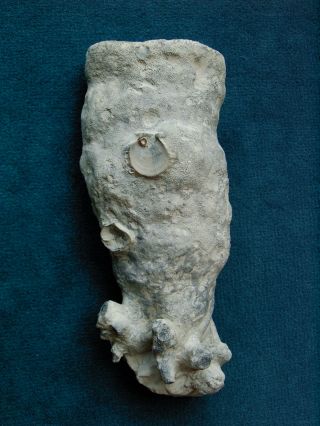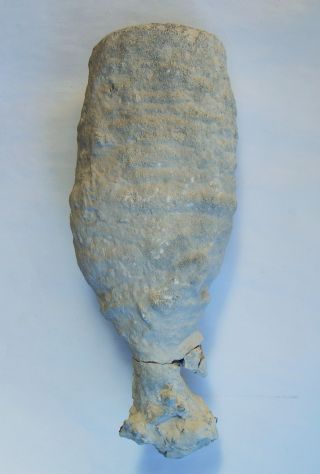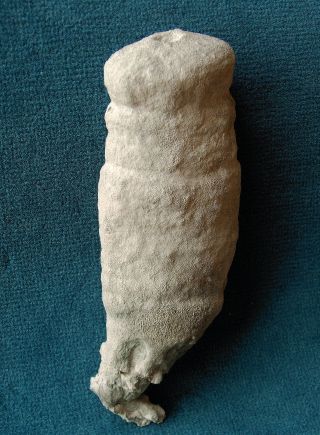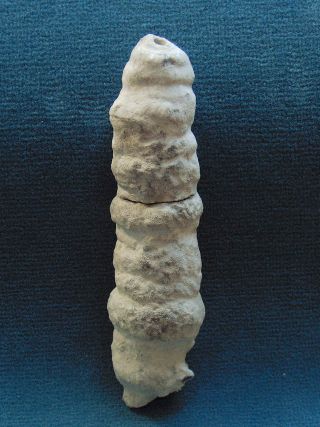
Scytalia turbinata
Roemer 1864
The specimen shown on the left has strong roots and a deep tubiform paragaster, about 10 mm wide. The paragaster outlet on the truncated top of the sponge is surrounded by narrow, radiating furrows. The surface is covered by densely crowded pores, still recognizable by the naked eye.
The rhizoclones of the skeleton are relatively large, of a stretched habit, and with few spines. Hence, according to Schrammen (1924) the species is not Pseudoscytalia terebrata, but Scytalia turbinata.
(The shell in the middle is Spondylus sp.)

. . . Another example of Scytalia turbinata showing typical concentric growth stages.

. . . Another fine example with a slightly conical top.

The specimen shown here is a variant called Scytalia turbinata var. elongata. It is more slender in habit and has many prominent concentric bulges.